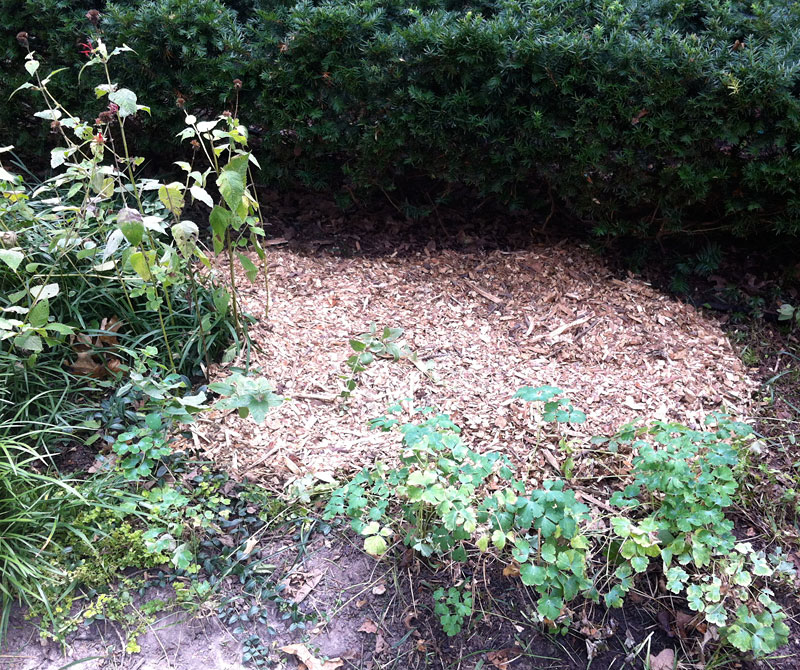Strategies for Maintaining My Garden Through the Winter
What do I normally do to prepare my garden for winter? I panic the night before a frost is predicted. I lay old towels on the floor to protect it from dirt and dampness and bring inside all the container plants that are not hardy. When I get time I then stick the plants where I can make some room in my condo which is for the most part not very well-lit. Some of my plants survive this kind of laissez-faire treatment for years but many of them although alive don’t look as good as they could. I think some planning is called for if I want to do better than have hit-or-miss results this year.
Strategy #1 – Saving seeds
Most of my garden plants are hardy perennials and need little or no help from me to survive the winter. However there are a few plants I grow as annuals that I replant every year from seed or just let them reseed themselves – for example Texas Sage and Flowering Tobacco.
Would you like to try saving some of your plants as seeds this year? Here are some tips on seed saving and seed starting:
- Seed Saving and Trading
- Start Some of Your Spring Planting Right Now! Part 1
- Start Some of Your Spring Planting Right Now! Part 2
- Start Some of Your Spring Planting Right Now! Part 3
- Schnarr’s Calendar has suggested indoor and outdoor planting dates for many popular plants
Strategy #2 – Overwintering as cuttings
I love the sweet potato vines I planted in containers this year. The whole plants are too large for me to bring inside as is so I’m going to grow a couple as cuttings indoors and overwinter the rest as tubers (see Strategy #3).
Here is the method for starting cuttings that I learned in my Master Gardener class. One of my practice plants from the training program is still alive, so give it a try!
- Prepare a tray full of sterile seed starting medium.
- Use a sharp clean knife such as a craft knife to cut a 3-4 inch shoot from the stem tip.
- Remove the bottom few leaves from the cut segment.
- Dip cut end in rooting hormone.
- Place cutting in medium and water in well, then let drain.
- Put tray in a plastic bag or cover with plastic wrap for about a week.
- Place cuttings in a well-lit location that is 75 to 80 degrees F if possible and keep evenly watered.
- Gradually harden off cuttings to prepare for planting.
Strategy #3 – Overwintering as dormant bulbs
I grew Cannas and Sweet Potato vines in containers this summer and I’m going to need to bring them in for the winter. Here is how to store non-hardy bulbs.
- Dig up bulbs, divide and clean them.
- Let the bulbs dry in an area with good air circulation for a week or two.
- Dust with sulfur powder to prevent rot.
- Pack them in a box with peat moss, wood shavings or shredded paper and store in a dark, dry, cool location. Keep packing medium slightly moist and inspect monthly for rot. Make sure this location is away from stored fruits and vegetables.
- Replant outside in the spring after the last frost.
For tender bulb plants that do not go dormant, repot in a container. Trim off any old foliage but leave the good foliage. Keep evenly moist in a well-lit warm environment.
Strategy #4 – Overwintering as a house plant
For cacti, succulents and tropical plants that are small enough to just leave in their containers and bring in, they will get the following treatment:
- Provide as much light as possible.
- Reduce the amount of watering.
- Refrain from fertilizing.
- Provide humidity tray for plants that like humidity.
- Inspect for pests and treat if necessary.
- Sprinkle BT on soil to reduce fungus gnats breeding in the soil.
Strategy #5 – What’s going to go in my containers during the winter?
This past year I made more use of container plantings in my outdoor garden than I ever have. They added so tremendously to my enjoyment of the garden and I got so many nice comments on them from neighbors that I’m going to try to keep at least one of my containers going all winter. Some of my containers are too fragile to ride out the freeze-thaw cycle so I will store them empty indoors, but there are one or two that I think can withstand the temperature variations as long as they have good drainage. Pretty soon I will have to decide what to put in them. I have decided to plant Pansies around the edges and Winter Scouring Rush in the center. The rush should stay green all winter. Winter Scouring Rush can become invasive but it has some good qualities – it’s an interesting “living fossil” that reproduces with spores and rhizomes. It can grow in soil or in standing water. I have some in my water garden also.
Many people wait until late winter or early spring to plant Pansies but you can plant them in fall – they may not look great all winter but planting them in the fall gives them a head start and you will get a better and earlier show in the spring. If I decide I need a third layer to add interest between my low plant and my tall plant, I think I will try putting some trimmed evergreen boughs in water containers set into the soil. If your winter planters need a little help, dried plants, artificial plants, lights and seasonal decorations can be good additions. As you’re planting your container in the fall, you can also add winter hardy bulbs for an extra surprise in the spring!
Strategy #6 – Keeping track of my perennials
Parts of my garden need a major makeover. Depending on what is going to be done, sometimes winter is an excellent time to perform some of the required tasks. Winter is also the time when many of my perennial plants are dormant and can’t be seen above the soil surface. I may risk damaging them if I make major changes in their spot. Some of my native plants like Wild Sweet William and Indian Pink I have tried for years to establish before success – I don’t want to risk losing
those plants now that I’ve finally gotten them in a place they like. They should not be trod on, accidentally dug up or smothered. I need to know where these plants are at all times so before they die back to the ground I will make drawings of my garden and put tags in the ground to mark the plants.
Strategy #7 – Protecting plants in situ
The growing season for some crops can be extended with row covers. Some plants such as strawberries, mums and roses need mulching for the winter and just about any plant will benefit from it even if it will survive without mulch. Mulch stabilizes the ground temperature, prevents frost heaving and can help keep soil from drying out too much. If you have any newly planted broadleaf evergreens such as azaleas, boxwood and hollies, place a burlap screen around them for winter wind protection. Paint the trunks of young fruit trees with diluted white latex paint to prevent winter sun scald.


